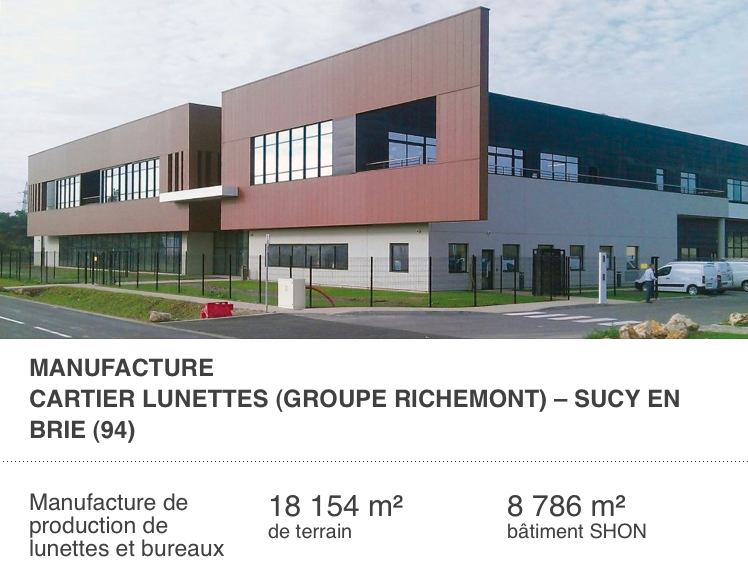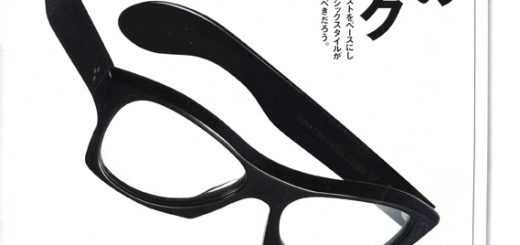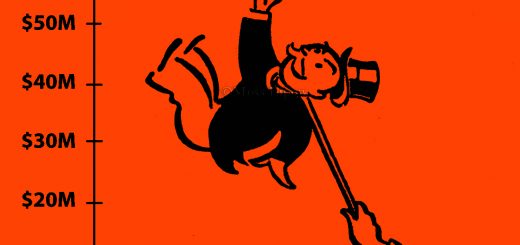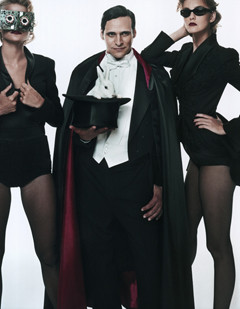The Future Of Eyewear Licensing.
A lot to catch up on…
When I first started in optical, one thing struck me as strange about the industry: it was the only fashion related category in which the biggest selling brands were all licensed. Many of those licenses were worth tens, if not hundreds of millions of dollars over their duration.
“But why don’t those licensors just start making and selling their own product?”, I’d wonder. Although it’s true that building a distribution network is difficult and expensive, the fashion houses licensing the brands weren’t hard up for capital or know-how. It seemed like a no-brainer.
Some 15 years later, they’ve finally gotten around to doing the obvious.
First Kering (Gucci) Group formed an eyewear subsidiary for their brand portfolio, which includes:
Gucci
Yves Saint Laurent
Boucheron
Bottega Veneta
Balenciaga
Stella McCartney
Alexander McQueen
Brioni
Girard-Perregaux
JeanRichard
Qeelin
Pomellato
Dodo
Christopher Kane
Tomas Maier
McQ
Ulysse Nardin
Puma
Cobra Golf
They recently partnered with Richemont Group, whose brand portfolio consists of
A. Lange & Söhne
Azzedine Alaïa
Baume & Mercier
Cartier
Chloé
Dunhill
Giampiero Bodino
IWC Schaffhausen
Lancel
Jaeger-LeCoultre
Montblanc
Officine Panerai
Peter Millar
Piaget
Purdey
Roger Dubuis
Shanghai Tang
Vacheron Constantin
Van Cleef & Arpels
Perhaps most significantly, Richemont has considerable experience in the manufacture of luxury accessories that require machining. This includes a nearly 100,000 square foot factory for Cartier eyewear in Sucy-en-Brie in the Val de Marne that employs some 250 people. Their eyewear subsidiary generated nearly 45 million euros last year, but at around $700 to $4000 for most frames that’s not a lot of volume. The revenue also represented a drop of nearly 10% in the past year. It seems probable they have both excess production capacity, and a need for more effective distribution.
Enter Kering. Richemont has taken a 30% stake in Kering Eyewear, and Kering Group now owns the Sucy-en-Brie facility. I’m not sure whether the deal includes Cartier’s eyewear facilities in Besançon or Fundão Portugal as well.
Of course a few months ago LVMH purchased 10% of Marcolin to use them as preferred partner for their brand portfolio, which includes:
Christian Dior
Berluti
Céline
Dior
EDUN
Emilio Pucci
Fendi
Givenchy
Kenzo
Loewe
Loro Piana
Louis Vuitton
Marc Jacobs
Moynat
Nicholas Kirkwood
Rimowa
Thomas Pink
Bulgari
Chaumet
FRED
Hublot
TAG Heuer
Guerlain
Zenith
Bulgari
One wonders what licenses will be left for the optical companies to fight over?
Leonardo Del Vecchio is a rather brilliant fellow. When his business really began to boom he was busy taking steps to mitigate the giant risk factor of not owning their own brands. LVMH and Kering posed the greatest risk, since both owned a giant brand portfolio that could drive big volume if either started a new entity.
It’s no coincidence Luxottica hardly has any of their brands in its portfolio. They’ve focused on major unaffiliated brands like Prada, Chanel and Armani. In addition, they’ve been collecting strong house brands indigenous to eyewear for the past 20 years. They’re well prepared. Safilo, Marcolin, De Rigo et al., not so much.
But still, wandering past Luxottica’s main booth last Vision Expo, I noticed out of some 22 brands listed, only 3 were house brands. Has Luxottica done enough?
Even the mighty house brands they own aren’t enough to properly utilize their vast sales and distribution network, or make up for lost revenue if their bigger licensors drop out.
But my guess is they’re fairly confident this won’t happen.
Why do you suppose that is?
We’ll look into it next week…






Hi Moss!
Welcome back! It’s been far too long.
As far as brands are concerned, there are a frowing body of eyewear buyers specifucally looking for a lack of conspicuous branding on their ophthalmic frames. In addition, the custom/bespoke/scanning category has yet to fully establish itself, but watch out when it does!
Me two cents.
B
PS – Did I say “Glad you’re back!”?
Thanks Barry. Which scanning technology are you talking about?
I’m using Roger Bacon and 3DNA at this time
As far as Roger Bacon is concerned, a ton of people have been working on this kind of technology. First company I’d heard about to offer something similar was ThirdLove, a few years ago. How does Roger Bacon work? Do people still have to shoot pictures of themselves from very specific multiple angles?
I’d thought about pursuing what 3DNA is doing years ago. The technology isn’t all that complex. With 3DNA, are customers “designing” the frame capable of handling details like bridge width, lens aperture, etc.? Are there parameters? How does it work?
Roger Bacon uses a Structure Sensor scanner attached to an iPad. You move around the person to capture a 360 degree scan. The optician/patient picks a frame design and color from the available choices that are included in the app. They have samples as well. There is a virtual try-on projected on a monitor display. The customization is focused on the shape of the bridge/nasal, pantoscopic tilt and the length and angle of the temples. Their frames are 3D printed using SLS.
3DNA allows users to create their own designs from a variety of materials. I am not sure about the level of customization in terms of whether the dimensions and shapes are input by the designer or based upon the dimensions and contours of the scanned image. They also provide for a virtual try-on. I believe 3DNA mills their frames on a CNC and they offer a variety of frame materials.
I did some work on a similar project to 3DNA and found there had to be practical parameters. I’d be curious to see how 3DNA dealt with that. I’d guess they only do essentially flat shapes?
As for Roger Bacon, it’s a bit more advanced than I remember ThirdLove being, which launched a few years ago. Probably uses similar FERET. How complicated a process is taking measurements?
Wojo EyeWear™ invented “Exotic Skin Eye Glasses” US Patent d709,942. Any Exotic Skin on any Eye Glasses including sunglasses. This Patent is available for license or sale.
When did you invent them? People have been putting exotic skin on frames for some 50 years.
Hi Moss! New subscriber here…it’s cool to read your posts because they’re so jam packed with info. I’m a new business owner and just started a brand exclusively for selling non-prescription, female-only, fashion sunglasses. Read up before about Luxottica and Safilo, but personally found the story of Warby Parker more interesting. Would love to get your thoughts on them.
Since you’re the expert and connoisseur, would appreciate any advice on who to target in terms of potential customers.
Thanks.
Since its a female only line, I’d start with… females! Other than that, depends on a lot of factors.
I’m not sure how much of a factor WP is going forward.
First time reader here, and I much appreciate your approach to the licensing issue. Seems like this is becoming a much bigger issue for retailers to pay attention to. With Kering/Richemont breaking off their brands and LVMH/Marcolin joint-venture Thelios doing the same there are many brand switches coming soon and the distribution relationship will be turned over.
LVMH/Thelios will move Fendi (Safilo exp: 2022), Marc Jacobs (Safilo exp 2024), Dior (Safilo exp 2020), Givenchy (Safilo exp 2021), Bulgari (Lux exp: 2020) to their joint-venture sooner or later.
The biggest “free agent” one to watch is going to be Tapestry, Inc. which owns the Coach and Kate Spade (Jack Spade as well). Those licenses with Luxottica and Safilo will expire at the end of 2020 and you would think they would try to find a single partner (either Lux or Safilo or someone else?)
Michael Kors (Lux exp: 2025) also acquired Jimmy Choo (Safilo exp: 2023) which will create another domino to fall in about 4-5 years.
Safilo also has exposure with Tommy Hilfiger (PVH exp: 2020), Boss (exp 2020), Fossil (exp 2018), Max Mara (exp 2019).
With PVH having a long-term successful run with Marchon for their Calvin Klein line it would look like that is a good pairing of distribution and licensing for them to line up all their brands; but maybe Safilo will make a good run at bringing them all in together to offset all of their other branding losses over the years and in the near future; but it seems like the fashion conglomerates PVH, Kering, Tapestry, and Michael Kors don’t want to play in the same sandbox so I would guess they will only get one of them and not more.
Which leaves two of those giants in play for the rest (maybe De Rigo can make a comeback) or allowing a second tier vendor to jump into the bigger fray (Kenmark, L’Amy, Clearvision, McGee, Charmant, or Tura for examples).
Unless of course the big fashion liens keep buying each other up before then!
Sorry it took a little while to reply. Of course a proper response would probably constitute another blog post. Stay tuned. This subject will surely be revisited again.
Wow, it’s been long awaited to hear the next blog about this subject.
Could we discuss more of the recent developments licensing if possible?
It’s a macro-trend/market shift of great scope. Various partnerships have been forged since I wrote this post. I guess I’ll post another detailing them soon. Thanks.